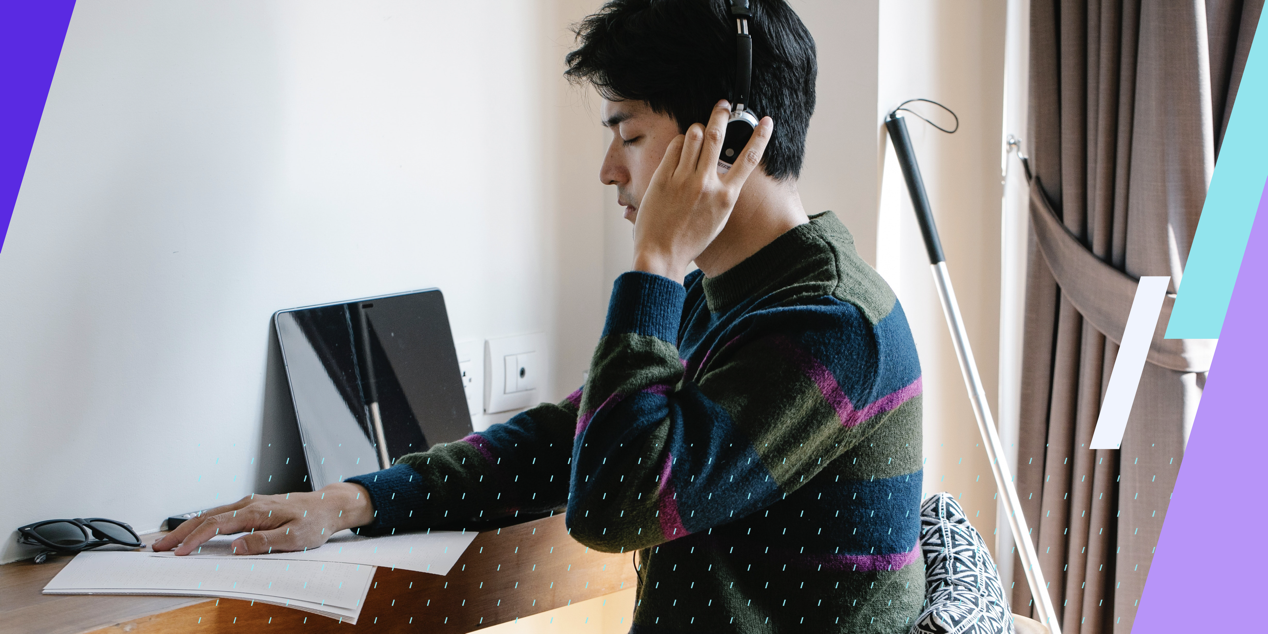People with disabilities worldwide rely on assistive technology to be as independent as possible in their daily lives. Assistive technology (AT) is defined as “any item, piece of equipment, software program, or product system that is used to increase, maintain, or improve the functional capabilities of persons with disabilities.”
AT can be low or high-tech. Low-tech AT includes simple communication boards and pencil grips and holders. High-tech AT examples are specialized computers, electronic lifts, and mobility devices like power wheelchairs.
This blog post will highlight some of the most widely used AT devices.
Screen readers
Screen readers are some of the most commonly used AT devices relating to Allyant’s work in web accessibility. Screen readers are pieces of software that blind and visually impaired people use to navigate the Internet. Screen reading software verbally reads text that is displayed on a digital screen.
Our digital accessibility auditing team uses screen readers daily to assess critical web accessibility issues and to ensure equitable digital experiences for blind and visually impaired users.
The two most common web screen readers are NVDA (Non-Visual Desktop Access) and JAWS (Job Access With Speech). NVDA is free to download, and JAWS requires a paid license.
Common types of screen readers for mobile devices are VoiceOver for iOS and TalkBack for Android. VoiceOver and TalkBack are built-in screen readers and require no installation.
Screen magnifiers
Screen magnification tools are also commonly used by people with vision impairments. Screen magnification tools enlarge text and graphics on computer screens. Screen magnification software follows the cursor and magnifies the surrounding area, similar to how a magnifying glass works.
Screen magnifiers can also allow users to customize text, such as inverting the colors to make it easier for some users to see. Some screen magnifiers also offer the ability to adjust the cursor size and make other enhancements. Screen magnifiers can also come with built-in screen readers.
A well-known screen magnification tool is ZoomText Magnifier/Reader. ZoomText also has screen reading capabilities. In addition, ZoomText offers cursor, focus, and other screen enhancements to assist users with visual impairments.
Another common tool is Fusion, which is a combination of ZoomText and the JAWS screen reader. Fusion is used as an introduction to screen reading software, as it also uses ZoomText’s screen magnification features and is not strictly a screen reader.
Smartphones
Smartphone users worldwide may not know about the extensive accessibility features available.
There are many accessibility-related apps, such as Be My Eyes or Seeing AI. There are also speech recognition apps such as Dragon. AudioNote is a useful notetaking app that allows users to record classroom lectures.
Smartphones are good examples of universal design because although they were not created specifically for people with disabilities, they have several features that improve the lives of people with disabilities.
Hearing aids
Hearing aids are essential assistive technology devices for people who have hearing impairments. Many of these people cannot function effectively without them. By amplifying sounds, hearing aids allow people with difficulty hearing to communicate more effectively with others.
Cochlear implants
Cochlear implants are somewhat related to hearing aids because they are electronic devices that significantly improve the lives of people with hearing impairments. Unlike hearing aids, though, cochlear implants do not amplify sounds but directly provide a sense of sound to people. As of December 2019, there have been approximately 736,900 cochlear implants worldwide.
Amazon Alexa
While not often considered an AT device, Amazon Alexa has many helpful accessibility features. For example, I use Alexa to control the lights and ceiling fan in my condo. I have found Alexa to be especially good with speech recognition. Alexa also has a “Show and Tell’” feature that uses the device’s camera to tell blind and low-vision people which objects, such as grocery items, they are holding.
Alexa has features that assist people with other disabilities as well, including mobility, speech, and hearing impairments. I would recommend Alexa to people with disabilities who wish to live independently. Plus, Alexa is fun!
The power of AT
These devices and more emphasize how essential AT is to improve the quality of life for people with disabilities. Because of my disability, I have direct experience with many AT devices. There are countless other AT devices as well. Contact us with any AT (or digital accessibility) questions, as many Allyant team members have first-hand AT experience.

